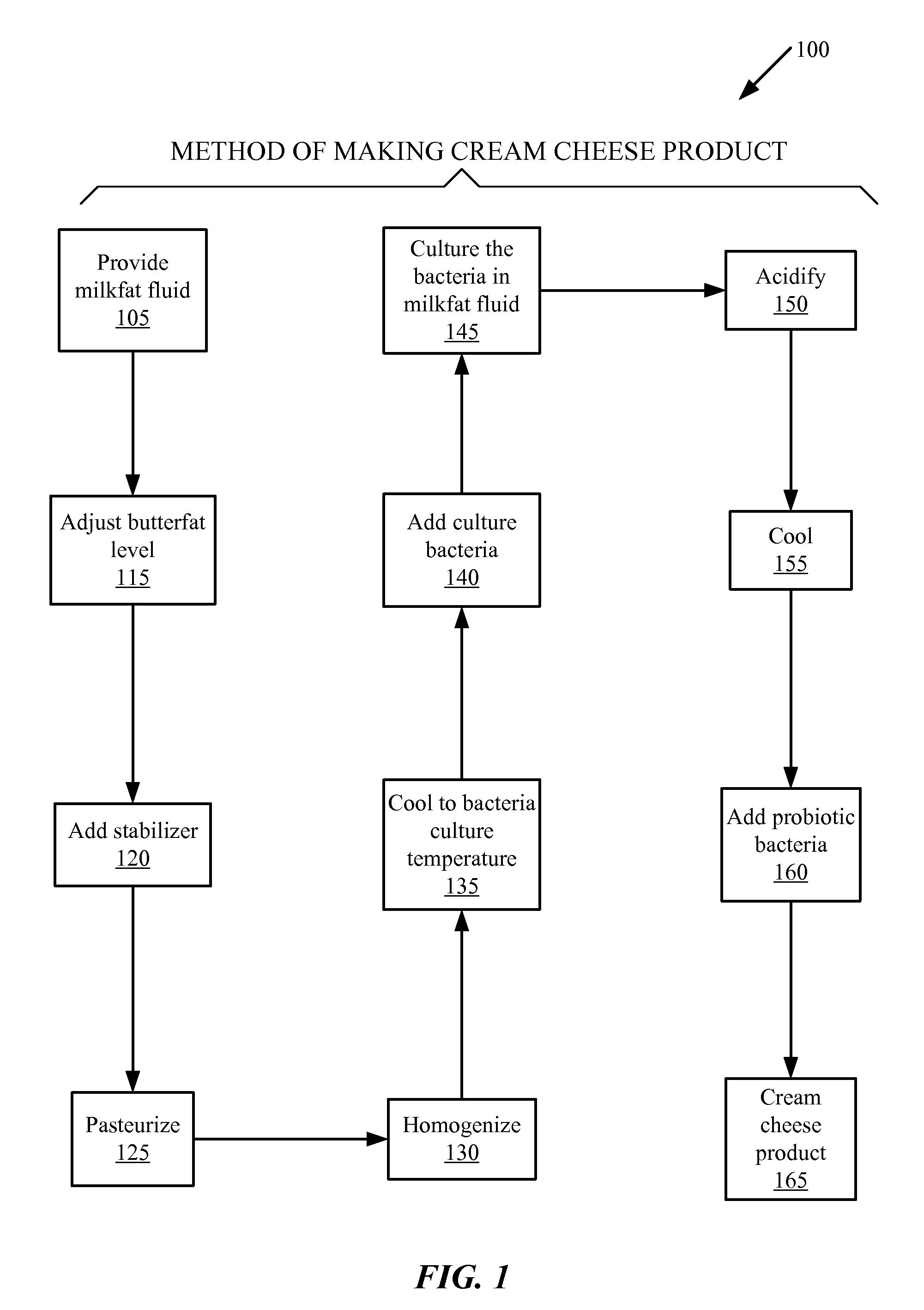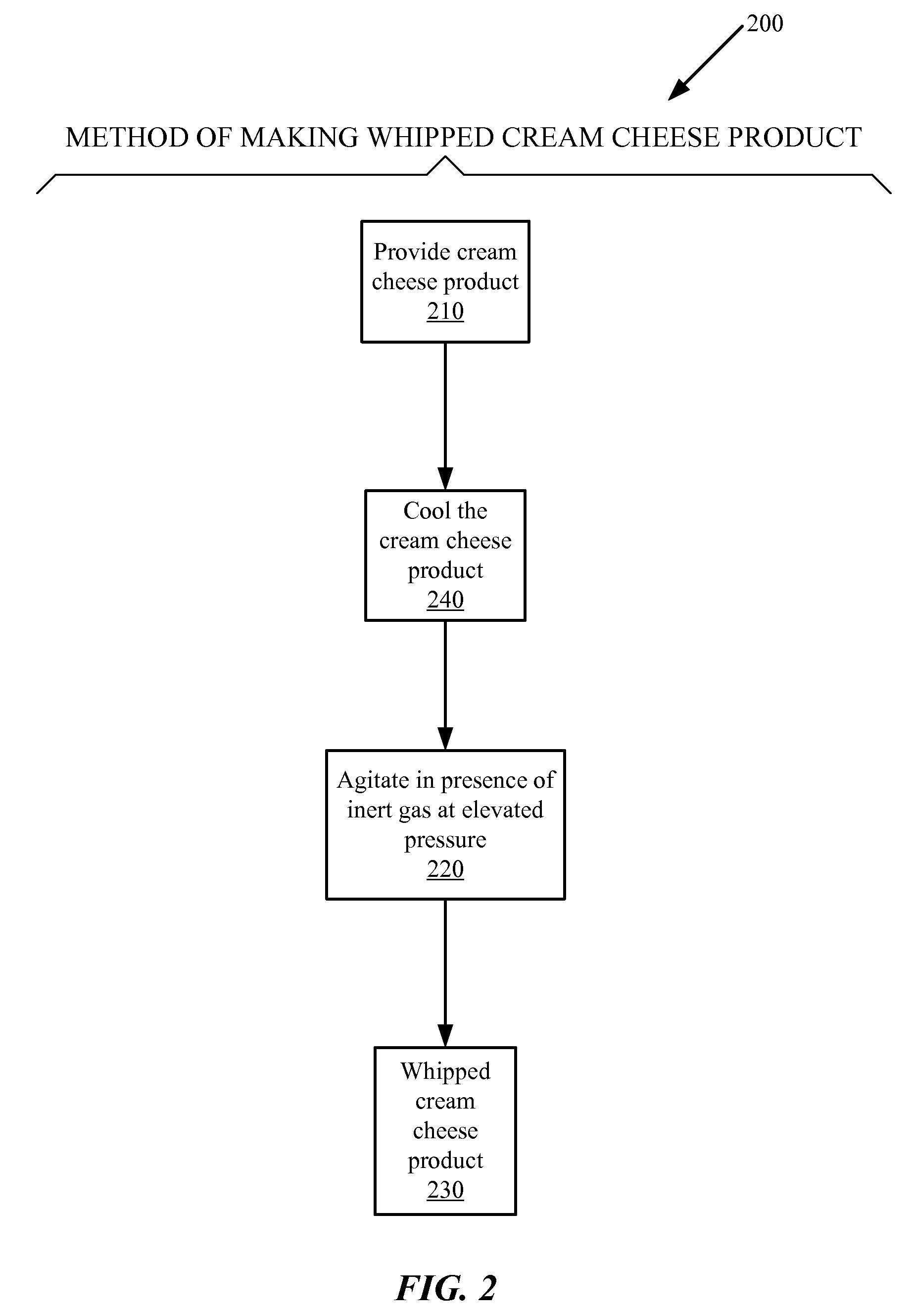Cream Cheese Products and Methods of Making the Same
a technology of cream cheese and products, applied in the field of cream cheese products and methods of making the same, can solve the problems of cream cheese typically having a bland, dull, virtually unnoticeable taste, and retaining liquid whey in the curd,
- Summary
- Abstract
- Description
- Claims
- Application Information
AI Technical Summary
Benefits of technology
Problems solved by technology
Method used
Image
Examples
example 1
[0057]A batch of 1,500 pounds of heavy cream having a butterfat content of 44% is pumped into a kettle equipped with a heater and an agitator. The butterfat content of the cream is then adjusted to 33% by weight by the addition with agitation of 195.8 pounds of nonfat dry milk and 180 pounds of water. After 15 minutes of agitation, 9.01 pounds of K6B493 stabilizer is added to the cream with agitation to thicken the mixture. The mixture is then pasteurized by heating it to a temperature of about 165° F. and maintaining that temperature for about 15 minutes. The mixture is then homogenized by subjecting the mixture to a pressure of about 3,000 PSI for about 5 seconds. The mixture is then cooled with agitation to 85° F., whereupon 500 milligrams of pHage Control™ 604 cream cheese culture bacteria are added to the cream with agitation for 15 minutes. The mixture is then maintained at 85° F. for about 14 hours until a pH of about 4.5 is reached. The mixture is then acidified to a pH of a...
example 2
[0059]A batch of 1,335 pounds of heavy cream having a butterfat content of 44% is pumped into a kettle equipped with a heater and an agitator. The butterfat content of the cream is then adjusted to 23.5% by weight by the addition with agitation of 244 pounds of nonfat dry milk and 765 pounds of water. After 15 minutes of agitation, 11.25 pounds of K6B493 stabilizer is added to the cream with agitation to thicken the mixture. The mixture is then pasteurized by heating it to a temperature of about 165° F. and maintaining that temperature for about 15 minutes. The mixture is then homogenized by subjecting the mixture to a pressure of about 3,000 PSI for about 5 seconds. The mixture is cooled with agitation to 85° F., whereupon 500 milligrams of pHage Control™ 604 cream cheese culture bacteria are added to the cream with agitation for 15 minutes. The mixture is then maintained at 85° F. about 14 hours until a pH of about 4.5 is reached. The mixture is then acidified to a pH of about 4.4...
PUM
 Login to View More
Login to View More Abstract
Description
Claims
Application Information
 Login to View More
Login to View More - R&D
- Intellectual Property
- Life Sciences
- Materials
- Tech Scout
- Unparalleled Data Quality
- Higher Quality Content
- 60% Fewer Hallucinations
Browse by: Latest US Patents, China's latest patents, Technical Efficacy Thesaurus, Application Domain, Technology Topic, Popular Technical Reports.
© 2025 PatSnap. All rights reserved.Legal|Privacy policy|Modern Slavery Act Transparency Statement|Sitemap|About US| Contact US: help@patsnap.com


